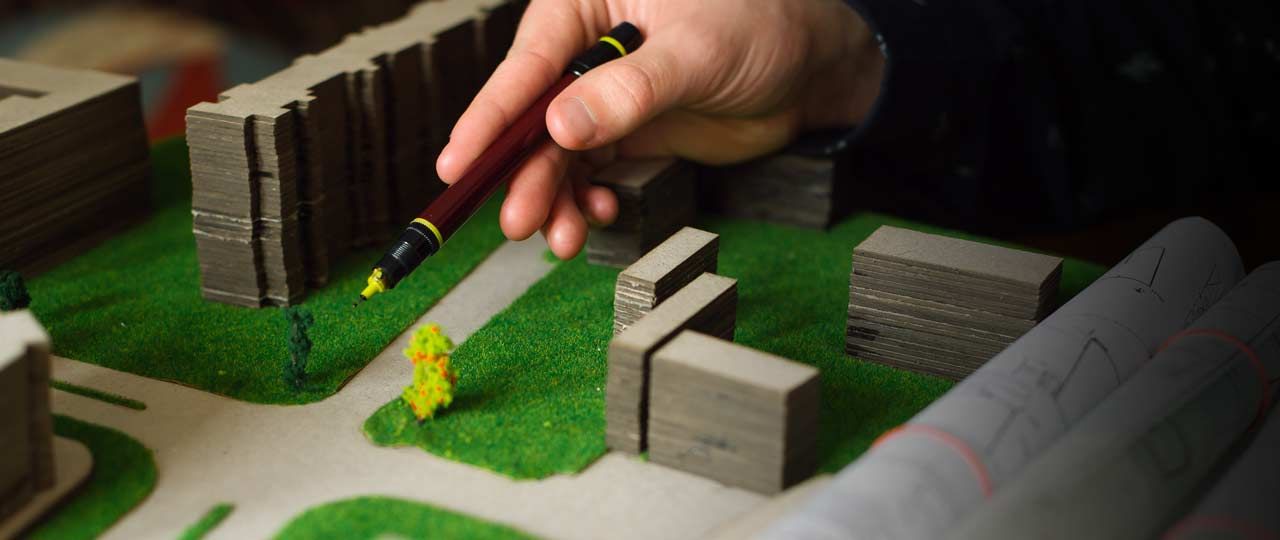
Garden village proposals are up against obstacles, balancing land supply, political process and the housing crisis. Will they work?
Ebenezer Howard’s vision of the garden city didn’t last beyond the first few decades of the twentieth century, but the yearning for a utopian ideal of countryside communities has never really gone away.
Over the past few years, garden cities have once again come to the forefront of planning policy. The government is currently supporting the development of 23 garden villages and towns through its Garden Communities Programme, with an announcement of plans for more new communities anticipated soon.
We look at what this could mean for planning policy in rural areas.
From garden cities to garden villages
Since the post-war housing boom and the creation of new towns such as Milton Keynes and Telford, most housing development in the UK has served to extend existing settlements rather than create new ones. The result has been sprawling housing estates and infill development on any available patch of brownfield land.
Now, the government is looking to revisit the promise of garden cities and revamp the theory for the modern day. Their ambition is to create a number of new settlements on low-cost brownfield or agricultural land away from existing towns and villages. These garden communities will vary in size from garden villages of 1,500 homes to towns of up to 40,000 properties.
”Garden villages” sound appealing, and Craig Noel, Director at Strutt and Parker’s National Planning team, believes that this type of development could be a more attractive solution to the housing crisis for local people than expanding rural towns and villages.
“Garden villages are a more acceptable situation to many local people as development is literally ‘not in my backyard’. As they’re supposed to be self-sustaining, within reason, they also take pressure off local services.”
The challenges facing garden towns and villages
While they may appeal to national policymakers, planners and people in the local area, projects of this scale are not without their challenges.
“The cost of providing infrastructure to these developments is a big challenge, especially in areas where the relative value of new housing is relatively low,” explains Craig Noel.
One of the implications of developing bigger sites in more isolated locations is that landowners may be more likely to accept a lower price per acre to release their land. However, developing land on this scale is a huge practical and political challenge.
On one side you have housebuilders, who are looking for low-risk opportunities to deliver returns to their shareholders. Their ideal project is to build out sites of 50-300 homes over a relatively short period, selling as they go.
On the other side, you have government champing at the bit to get as many homes built as quickly as possible, with associated infrastructure and services that don’t provide an immediate financial benefit to the builder.
Solving the garden city conundrum
The solution, as Craig sees it, is the introduction of a new role in the development process – a “master builder” to bridge the gap between planners and housebuilders and create the settlements that everyone (including home buyers) actually want.
“What we are seeing is a new breed of master developer – not a housebuilder, but a company that assembles land and facilitates parts of the site to targeted housebuilders to do their thing. It seems this is one of the most reliable ways of actually delivering these garden cities.”
This new approach to large development schemes could create an environment where every partner for the scheme gets a fair price for the land they sell, homes they build or services they provide while ensuring that the total cost of development doesn’t go beyond what the local housing market can support.
If the government’s Garden Communities Programme can support the creation of this environment and provide funding to overcome stumbling blocks, then perhaps the new garden cities will be able to deliver the homes our country so desperately needs.
